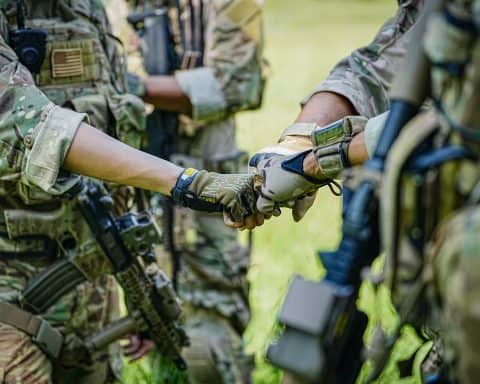- Chennault International Airport conducts intensive firefighter training exercises to prepare for worst-case scenarios involving aircraft fires.
- This training highlights the high stakes of aircraft emergencies due to fuel hazards, particularly fuel stored in aircraft wings.
- The drills are led by Assistant Fire Chief Andre Zeunik and adhere to FAA regulations, emphasizing beyond compliance a commitment to excellence.
- Collaboration with local fire agencies enhances the training, creating a knowledge-sharing environment that boosts regional safety preparedness.
- Realistic emergency scenarios are simulated using a sophisticated prop, allowing firefighters hands-on experience with potential situations.
- Airport Executive Director Kevin Melton underscores the necessity of these exercises to ensure readiness in safeguarding valuable runway activity.
- Overall, the training emphasizes that preparedness is not just a protocol but a passionate, essential commitment to prevent aviation disasters.
As the sun rises over Chennault International Airport, a fierce blaze erupts on the tarmac, sending plumes of black smoke into the clear Louisiana sky. But this time, it’s no emergency—just a meticulously planned training exercise designed to prepare firefighters for the worst-case scenario.
Amidst the hazy silhouettes of aircraft, the fire crews spring into action, fully geared and laser-focused. For these responders, each whoosh of flame and billowing heat wave is a jarring reminder of both their precarious mission and the high stakes involved. Aircrafts carry massive volumes of fuel, enough to turn a small fire into a raging inferno, especially given that most fuel is stored in the plane’s wings—a design choice that could lead to catastrophe if ruptured during an emergency.
The Chennault Airport team, under the vigilant leadership of Assistant Fire Chief Andre Zeunik, executes semiannual drills adhering to FAA regulations. These practices, however, aren’t merely about compliance. They represent a relentless commitment to excellence and preparation. Zeunik emphasizes this ethos, ensuring his team is not just compliant but prepared to face any fiery ordeal.
Further enhancing this rigorous drill is the collaboration with local fire agencies. Such partnerships transform the training session into a dynamic learning hub where first responders can exchange crucial tactics and experience. This cooperation serves as a melting pot of shared knowledge, fortifying regional preparedness against aviation disasters.
Assistant Chief Zeunik and his team utilize a sophisticated prop that mimics real-life emergencies. They ignite the prop to simulate scenarios encompassing fuel spills, engine fires, and more, ensuring hands-on practice for scenarios they hope never to encounter for real.
Airport Executive Director Kevin Melton insists that transcendental training exercises like these ensure readiness for the multitude of variables that a fiery crisis can throw at them. He reiterates that the bustling runway of Chennault, welcoming a medley of expensive and critical cargo—private jets, military aircraft—is an environment where preparedness can’t just be a protocol; it must be passion-driven.
As the firefighters conclude their challenging half-day drill with soot-streaked faces and exhausted grins, the key takeaway resonates profoundly: Preparedness isn’t just desired—it’s essential. This cycle of training, learning, and collaboration etches a formidable line of defense against potential tragedies, aiming for the day when meticulously honed skills might just save countless lives.
How Fire Simulations at Chennault Airport Could Change Aviation Safety Forever
Insights into Chennault International Airport’s Training Drills
The meticulously orchestrated fire drills at Chennault International Airport provide an essential glimpse into aviation safety measures. These exercises, which include collaborating with local fire agencies, reveal the comprehensive preparation required to handle worst-case fire scenarios on the tarmac.
Importance of Aviation Fire Drills
– Fuel Management: Aircraft carry a significant amount of fuel in their wings. Any compromise in this design during an emergency could escalate a simple fire into a disastrous situation. Understanding this risk underlines the importance of these drills.
– FAA Regulations: These training sessions comply with FAA regulations, ensuring the firefighters are not only meeting compliance but exceeding it by achieving readiness through rigorous practice.
Collaborative Training Benefits
– Knowledge Sharing: By partnering with local fire agencies, Chennault International Airport creates a dynamic learning environment where diverse operational tactics and on-ground experiences are exchanged. This enhances the effectiveness of the training by introducing multiple perspectives.
– Regional Preparedness: Such collaborations build a network of trained responders who are better equipped to handle aviation disasters in the region.
Technological and Practical Components
– Sophisticated Props: The use of specialized props that simulate real-life emergency scenarios, including fuel spills and engine fires, offers firefighters a hands-on training experience that is crucial for developing the right skill set.
Real-World Use Cases and Industry Trends
– Airports Globally Recognizing Training Needs: As air travel continues to grow globally, more airports are recognizing the necessity of such comprehensive drills. The International Civil Aviation Organization (ICAO) advocates for increased safety drills across member states.
– Trends in Collaborative Safety Training: With the rising importance of inter-agency collaboration, more airports are adopting the model seen at Chennault, focusing on shared training programs to boost safety standards.
– Market Forecast for Safety Equipment: According to market analyses, the aviation safety equipment industry is expected to see a compound annual growth rate (CAGR) due to increased investments in training and safety drills.
Addressing Common Questions
Why are these drills so crucial?
These drills are monumental because of their role in preparing responders for rare yet potentially catastrophic events. They help translate theoretical knowledge into practical readiness.
How does Chennault’s approach differ from regular trainings?
Chennault’s drills go beyond standard procedures by integrating multi-agency participation and using advanced simulation technology, setting a benchmark in aviation emergency preparedness.
Pros and Cons Overview
– Pros:
– Enhances readiness for actual emergencies
– Promotes regional cooperation and knowledge exchange
– Meets and exceeds regulatory compliance
– Cons:
– Requires significant resource allocation and coordination
– Simulated scenarios can only approximate real-life unpredictability
Recommendations for Airports and Fire Departments
1. Invest in Technology: Utilize advanced simulation tools to replicate a broad range of emergency scenarios.
2. Pursue Collaborative Training: Partner with other emergency response agencies to strengthen regional readiness.
3. Conduct Regular Drills: Ensuring regular training sessions help maintain a high level of preparedness and compliance with safety regulations.
Final Quick Tips
– For airports looking to enhance their safety protocols, adopting Chennault’s collaborative and technology-driven training model can significantly improve emergency readiness.
– Regularly update the training curriculum to incorporate the latest in aviation safety research.
– Engage with wider community emergency response teams to broaden the pool of expertise and resources.
For more insights into aviation safety and training, visit FAA and ICAO.











